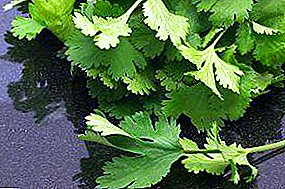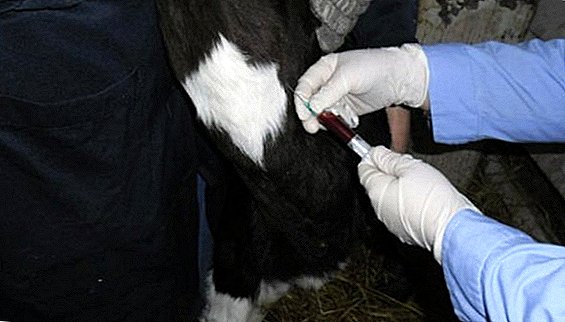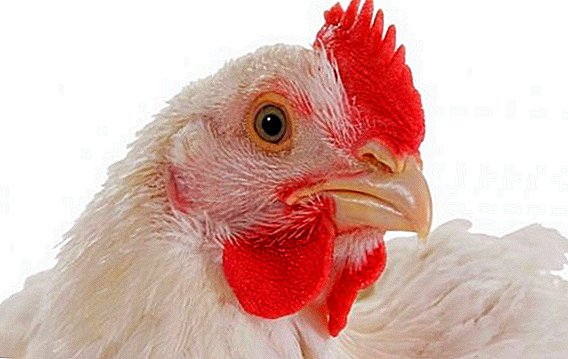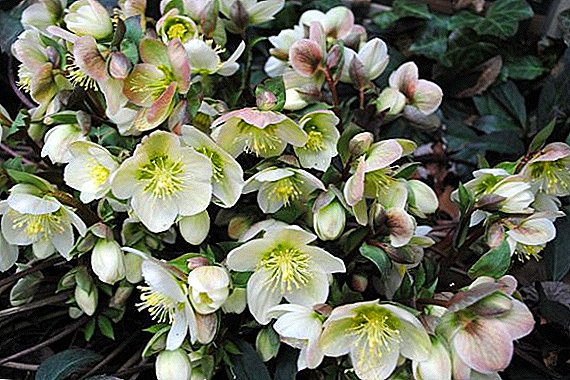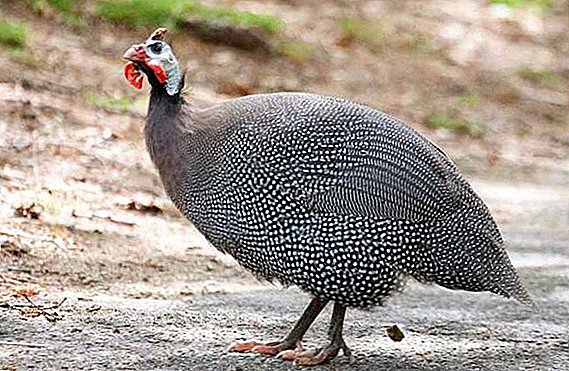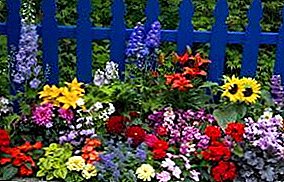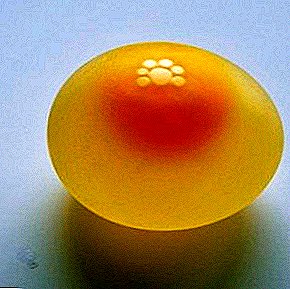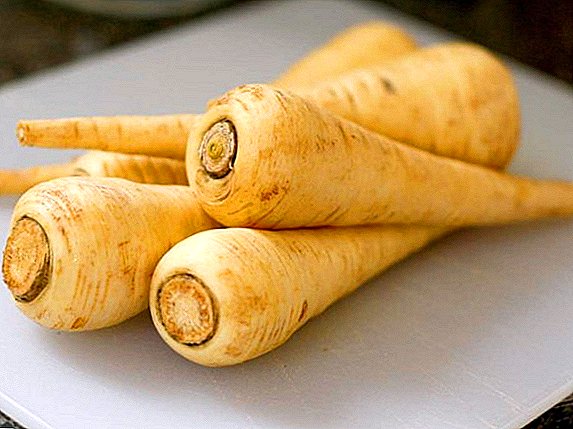 Among gardeners there is an opinion that growing seed parsnips - It is incredibly difficult. And all because it has low seed germination - no more than 50%. It is believed that this feature gave him a high content of essential oils. In addition, they can be stored no more than a year. However, if you are aware of these features and strictly adhere to agricultural technology, you can get the expected results.
Among gardeners there is an opinion that growing seed parsnips - It is incredibly difficult. And all because it has low seed germination - no more than 50%. It is believed that this feature gave him a high content of essential oils. In addition, they can be stored no more than a year. However, if you are aware of these features and strictly adhere to agricultural technology, you can get the expected results.
Parsnip seed treatment before planting
There is no unequivocal opinion among gardeners whether it is worth preparing parsnip seeds for planting. Some immediately sow them in the ground. Others recommend soaking them beforehand. Among all the methods of seed preparation, the following should be noted.
Did you know? Domestic gardeners grow mainly varieties of Long and Round. But in the people most often Long called all varieties that give an oblong root crop, although this is fundamentally wrong. The elongated root crops are of the Russian Size, Culinary, Guernsey, Student and others varieties that are popular in our strip.
 The seed is soaked in water for two or three days, and the water must be periodically changed so that it does not acid. After this period, the seeds are well dried. Another popular method is soaking in ash solution. For its preparation take a liter of water, which is diluted with 20 g of ash. In it, the seeds are kept for two days, after which they must be washed with warm water and dried well.
The seed is soaked in water for two or three days, and the water must be periodically changed so that it does not acid. After this period, the seeds are well dried. Another popular method is soaking in ash solution. For its preparation take a liter of water, which is diluted with 20 g of ash. In it, the seeds are kept for two days, after which they must be washed with warm water and dried well.
When sowing parsnip in open ground
It is believed that of all root vegetables, parsnip is the most frost-resistant vegetable. Therefore, it is boldly sown in early spring, without worrying about possible frosts. But in the northern regions it is recommended to wait for the middle of May. It is important that the seedlings were already 28-30 days old.
Podzimny sowing of vegetables is also practiced. It is carried out no later than mid-October. Interestingly, the ground for this event should be prepared in the spring. If the sowing of parsnip to hold in the fall, the spring shoots will ascend together. They, like the seedlings, are recommended to thin out, leaving only the strongest sprouts to grow.
Where it is better to plant parsnips on the site
If possible, choose a site for planting where there will be maximum amount of light during the day. Pasternak is a very light-loving plant, but in the extreme case it can grow in partial shade.
Important! Pasternak feels great on sandy, loamy and peaty soils. It is important that the soil for the parsnip be neutral, since the parsnips do not grow on acid soils. They must be lime before planting. This plant is cross-pollinated, so if you plan to plant several varieties, they should be sown not less than two kilometers from each other, if we are talking about open terrain. Indoors they are planted at a distance of 600 m.
Good and bad predecessors
 It is important to know not only where and when to plant the parsnip, but also with which plants it is “friendly”, and with which it is not. It is best to sow parsnip in those places where pumpkin, potatoes, cabbage, zucchini, tomatoes, and beets grew. It is good when special fertilizers were used in the cultivation of these vegetables.
It is important to know not only where and when to plant the parsnip, but also with which plants it is “friendly”, and with which it is not. It is best to sow parsnip in those places where pumpkin, potatoes, cabbage, zucchini, tomatoes, and beets grew. It is good when special fertilizers were used in the cultivation of these vegetables.
Vegetable loves when the land was fertilized in advance. Therefore, if the site has not been fertilized for a long time, in the autumn it is recommended to dig it up with organic matter: half a bucket per square meter. It is better not to break big clods of earth for the winter. In spring, around April, the procedure is repeated 3-4 days before sowing.
Did you know? Pasternak is considered one of the most easily assimilated root crops. In addition, it is rich in micro-and macro-elements, such as phosphorus, iron, calcium, magnesium, sodium. It also contains vitamins B, vitamin C, carotene. Thanks to the vitamins of group B, it is recommended to use it with a breakdown, it is good as a general tonic. In particular, it is advised to use parsnip not only for the prevention of sexual weakness, but also for its treatment. Well he showed himself in the regulation of digestion, appetite stimulation.
Pthe asternak has its "enemies": you should not plant it on plots where celery, parsley, carrots and other similar root crops were previously grown. Especially the parsnip itself. They have similar pests and diseases that can persist in the soil from last year and damage the vegetable.
Parsnip Seeding Scheme
For planting parsnip form high beds. There are several planting schemes. It can be planted with ribbons, the distance between which should be approximately 40-45 cm from each other. You can also form the wells and plant seeds to a depth of 3-4 cm, three pieces in each. The wells should be at a distance of 10-12 cm, the width of the rows between the same.
Important! If you have previously soaked the seeds, you must sow them in a moist soil.
 After sowing, the seeds are lightly sprinkled with soil, compacted soil and watered. Parsnip sprouts on the 20-25th day. Moreover, it can germinate at a temperature of 5-7 ° C. It is thinned out when 2-3 leaves appear on the plants. Leave the strongest of them, but so that the distance between them was approximately 5-6 cm.
After sowing, the seeds are lightly sprinkled with soil, compacted soil and watered. Parsnip sprouts on the 20-25th day. Moreover, it can germinate at a temperature of 5-7 ° C. It is thinned out when 2-3 leaves appear on the plants. Leave the strongest of them, but so that the distance between them was approximately 5-6 cm.
Care for parsnips on the site
For the first two months, the vegetable grows slowly, and caring for it will not cause any problems. It is similar to caring for carrots. The plant should be watered in time, weed, loosen the soil and periodically feed. The first time the soil is loosened after they are convinced that the seedlings have begun. In the future, loosening is carried out every time after rain and watering.
Important! Pasternak is rich in essential oils. In the event of contact with the skin and simultaneous exposure to sunlight, burns may occur. Therefore, in summer it is recommended to work with parsnip in gloves. For reinsurance, work is best done in the evening or early in the morning.
After the first thinning in the presence of two or three leaves, they are repeated when they grow to 7-8. In this case, the distance between the shoots should be 10 cm. In addition to regular loosening of the soil, it is necessary to constantly remove weeds. Diseases on parsnip are practically absent, but when flowering on it can live field bug, aphid, moth or carrot fly.
How to water parsnips
The plant loves moisture. Especially it is necessary for him during the period of formation of the roots. The lack of water is indicated by the pale color of the leaves of the parsnip, the slowed growth of the plant. Sometimes during such a period it releases an arrow. Be sure that at this time the roots are cracked, become fibrous, dry and rough.
 But excessive watering of parsnip also has a detrimental effect on the health of the plant. Soil with stagnant moisture is an ideal breeding ground for fungal diseases. In addition, the root of the plant in such conditions quickly rot. Therefore, after watering necessarily loosen the soil and remove the weeds. Over the summer, he needs an average of 4-5 irrigations, but if the summer is rainy, then they can even be abandoned.
But excessive watering of parsnip also has a detrimental effect on the health of the plant. Soil with stagnant moisture is an ideal breeding ground for fungal diseases. In addition, the root of the plant in such conditions quickly rot. Therefore, after watering necessarily loosen the soil and remove the weeds. Over the summer, he needs an average of 4-5 irrigations, but if the summer is rainy, then they can even be abandoned.
How to feed parsnips
Pasternak responds well to fertilizing. The first time nitrogen fertilizers are applied in a week or two after planting. The second time they are used in three weeks. And since the middle of summer they use phosphate and potash fertilizers. They are made only in the form of solutions. Sometimes ash or dung is used in a ratio of 1:10. It is important not to use fresh mullein, as the quality of the roots due to it decreases. Total for the period of growth of parsnip fertilizer must be applied 3-4 times. But if the soil on your site is quite fertile, then you can do without feedings.
Important! The first year of his life, the parsnip collects all the juices in the bud. If you dig it up for the winter and plant it next spring, the plant will bloom and produce seeds. They are large, like carrots, and you can always collect them yourself if you wish.
When to harvest and how to store crops
Parsnip harvesting is carried out in the deep autumn, when the tops wither and die. You can not remove it before frost, it will only improve its taste and enriched with useful substances. In order not to damage the roots when digging, this procedure is carried out with forks.
 Dug up root crops are freed from the tops, dried in the open air and sent for storage in the basement. It is important that the temperature in it was kept at the level of 0-2 ° С, and the humidity - at the level of 80-85%. But the question of how to store parsnips in the winter has its own particular solutions. So, in the basement it should be immersed in slightly damp sand, but, in principle, it is stored, as well as carrots.
Dug up root crops are freed from the tops, dried in the open air and sent for storage in the basement. It is important that the temperature in it was kept at the level of 0-2 ° С, and the humidity - at the level of 80-85%. But the question of how to store parsnips in the winter has its own particular solutions. So, in the basement it should be immersed in slightly damp sand, but, in principle, it is stored, as well as carrots.
But during long-term storage in the basement, the parsnips gradually soften. Therefore, if in your region there are no severe frosts in winter, it is better to leave the root crop for a cold period in the ground. He will survive the cold and make them just tastier.
Leaving the parsnip for the winter in the ground, pour a little earth on top of it. But note that next year it will bloom and may interfere with other plants. Therefore, it is better to transplant it to another place in the fall. Flowering plant falls on June. Seeds ripen gradually, so they must be collected on time, otherwise they will be sown throughout the site. After collecting them, it is necessary to sort them, select the best ones and save until the next year for landing.
Parsnips can be stored and dried. To do this, after digging it must be washed, cut into rings and put on paper. When they dry up, they are sent to the oven and dried. Then the rings are put in jars and closed with a lid. It can also be folded for storage in the freezer. To do this, parsnips are washed, peeled, cut into pieces, put in a bag, air is pumped out of it and placed in a freezer.
 Parsnip - rich in vitamins and other useful elements root vegetable. It is easy to grow it in the garden, if you follow a few golden rules: do not fill in, do not let it dry, feed it in time. By the fall you will get a good multi-vitamin harvest. The only complexity of the culture - low germination of seeds. This must be taken into account when selecting planting material for the next year.
Parsnip - rich in vitamins and other useful elements root vegetable. It is easy to grow it in the garden, if you follow a few golden rules: do not fill in, do not let it dry, feed it in time. By the fall you will get a good multi-vitamin harvest. The only complexity of the culture - low germination of seeds. This must be taken into account when selecting planting material for the next year.


